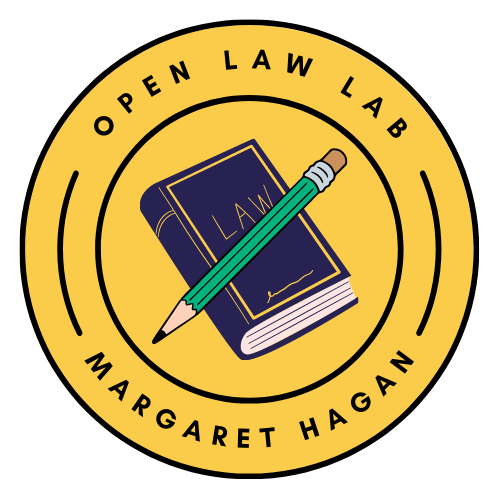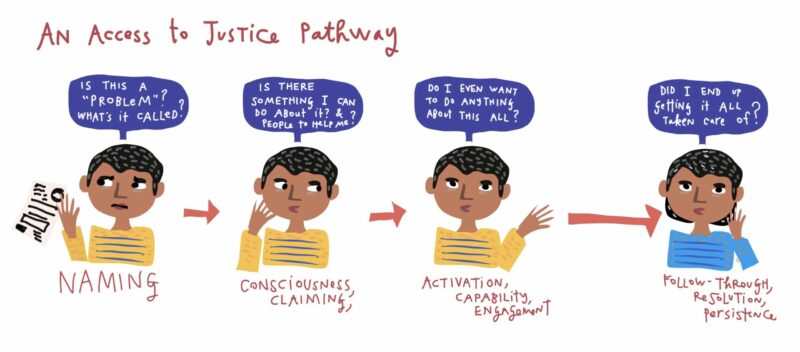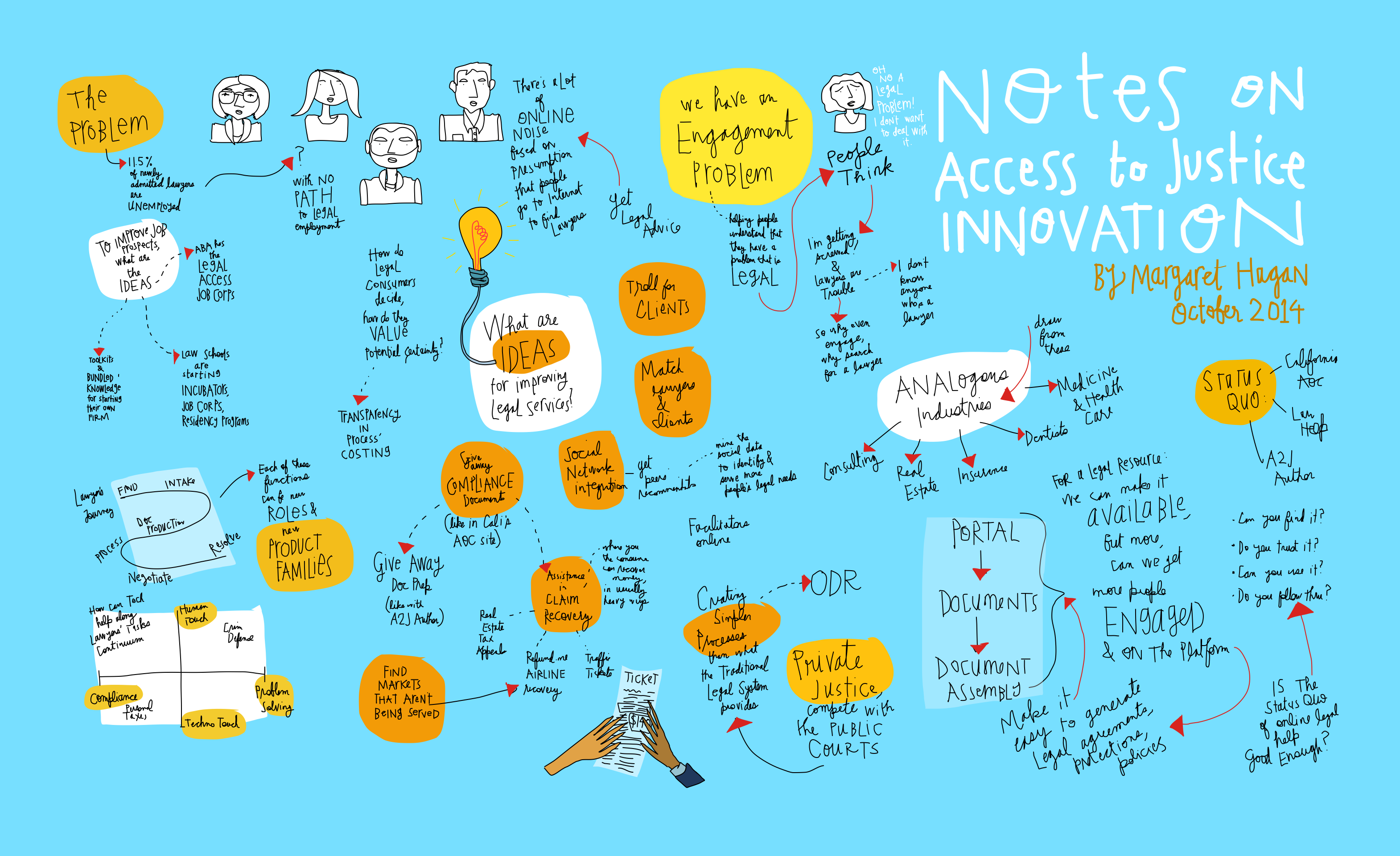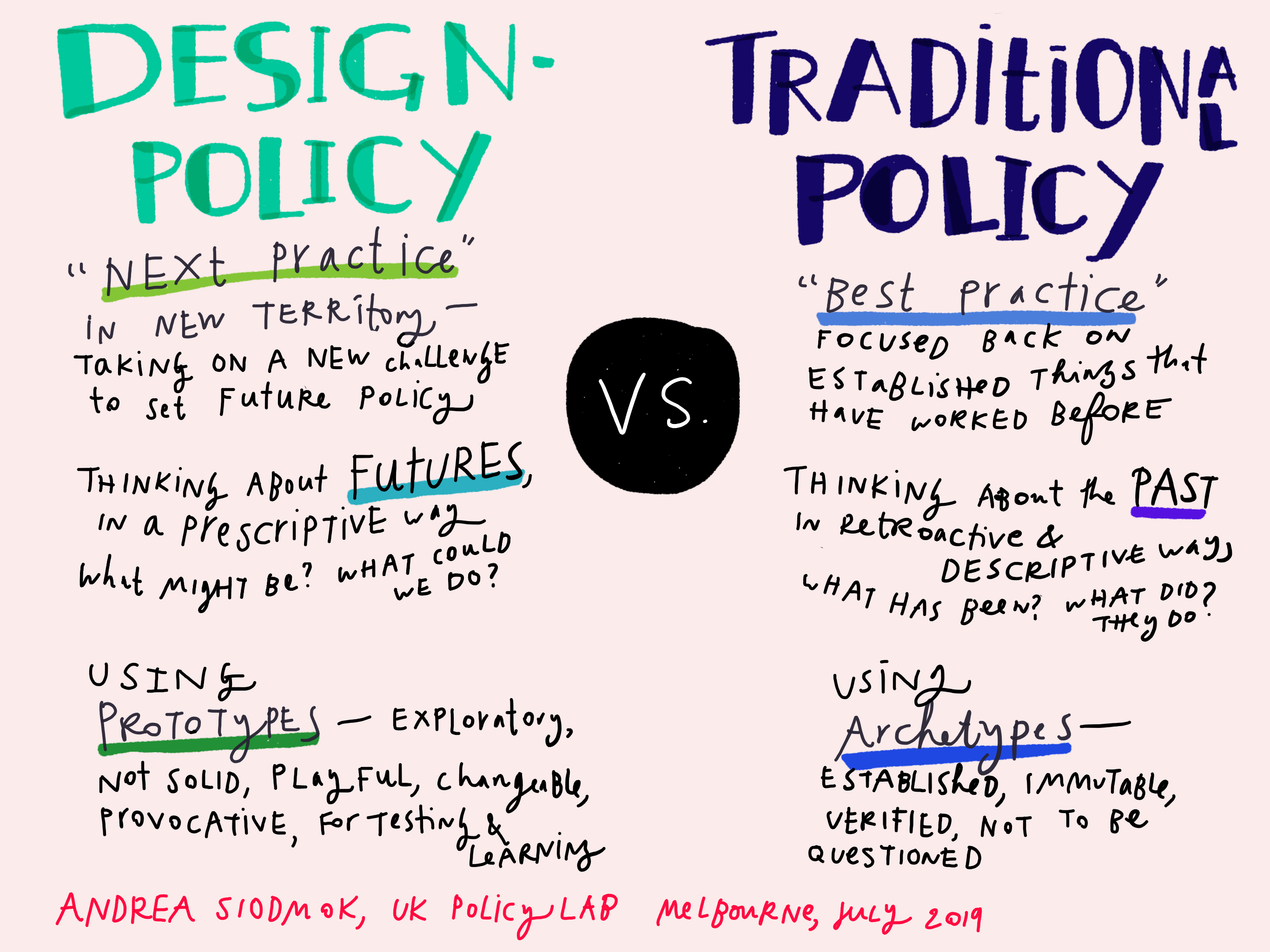How do we activate people along the Justice pathway?
I am lucky to be in a wonderful group of young scholars focused on access to Justice, with support from the American Bar Foundation and the JPB Foundation.
At our event this month to get to know each other’s research topics and findings, one theme has emerged as a focus in access to justice scholarship:
When we talk about access to justice research + interventions, can we have a common understanding of what a ‘justice pathway’ is?
And what are some promising interventions to help people move along this justice pathway, towards meaningful participation in the justice system to resolve their issues?
Access to justice studies include those about what people’s needs are, how they think about the law, how they seek out help (or not), and if they’re able to effectively use the system to get benefits, protections, and good social outcomes. It can help to think about these different studies, if seen through the lens of this pathway.

This justice pathway is generally as follows:
- Problem: Experience of a life problem or a legal challenge (a lawsuit filed against them, a debt collector harassing them, a child custody dispute, a landlord threatening eviction, a need for special education support for a child…)
- Naming: A realization that this life problem has a legal dimension, and that it can be addressed through using the justice system
- Action: A decision to act upon this problem, to seek out services and to use the justice system (formal or informal) to resolve the issue, get the benefit, assert one’s right
- Follow-through to Resolution: Actual follow-through on the problem, taking the series of actions necessary to get to a resolution for their family, housing, finances, schooling, security, etc.
This pathway discussion is rooted in other academic discussions:
- The classic Felstiner, Abel, and Sarat 1980 article on the transformation of disputes, and its pathway of people’s naming to blaming to claiming around issues they’re experiencing
- Rebecca Sandefur’s research on people’s legal needs and knowledge of what is a justiciable issue
- Susan Silbey’s work on legal consciousness
- Growing networks of work on legal capability, especially by Pascoe Pleasance and Nigel Balmer
- Empirical legal studies from Harvard’s A2J Lab, JJ Prescott, and others on how to increase people’s willingness to appear at court (and reduce default rates)
I’d argue this is also a rich area for collaboration between legal + sociology scholars focused on access to justice — with technologists and behavioral economists. In addition to studying what people’s needs, experiences, and pathways are, this pathway helps us think better about interventions we could build and evaluate.
What are the behavioral nudges, tech tools, information designs, or other interventions we could try to help people move further along this pathway — from problem to resolution?
This is where I will be focusing my research, design, and tech work over the next few years, and I hope there will be more scholars working on this question too! There are many threads of this challenge — better spotting of issues, more readily providing handoffs of services, matching people to appropriate services, increasing legal capabilities, reducing procedural barriers and administrative costs, and empowering people when representing themselves at a hearing.
And the pathway and interventions will likely be different for different legal challenges. What works to improve activation and follow-through in eviction and housing problems likely will differ from successful solutions for lengthy divorce and custody problems, or ongoing IEP support for kids with special education needs.
That’s why we need more scholars, technologists, designers, practitioners, and others to work together to find what interventions work, and get them as widely in place as we can.



